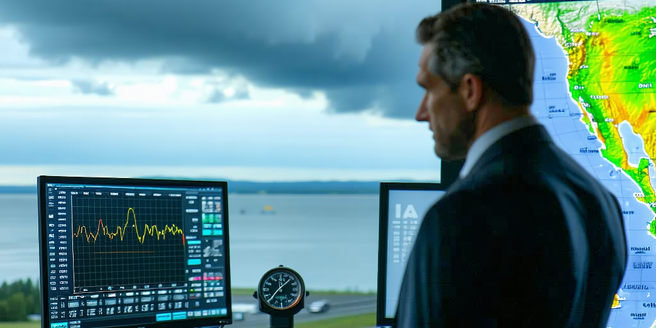
Introduction to Air Pressure and Its Importance
Air pressure is the force exerted by the weight of air molecules. It plays a critical role in various environmental and technological processes. Understanding air pressure is essential for meteorology, aviation, and even everyday activities like cooking. Variations in air pressure can lead to different weather patterns, determining whether it will rain or shine. In aviation, accurate air pressure readings are crucial for safe flight operations, ensuring aircraft maintain proper altitude and speed. Furthermore, air pressure influences how foods cook, affecting boiling points and cooking times. Most importantly, understanding air pressure can improve the efficiency of industrial systems, where precise control of air and gas pressure is necessary for optimal performance. Thus, air pressure is a foundational concept with widespread implications across numerous fields.
Types of Air Pressure Measurement Techniques
Air pressure measurement techniques have evolved, offering various tools and methods for obtaining precise readings. One common method involves the use of aneroid barometers, which measure pressure without liquid by using a small, flexible metal box that expands and contracts with pressure changes. Mercury barometers, though less common due to safety concerns, provide accurate readings through the displacement of mercury in a tube. In recent years, digital sensors have become popular, offering fast and accurate measurements easily integrated into electronic systems. These sensors often use piezoelectric elements to detect pressure changes, converting them into digital signals for display. Each technique has its own applications and limitations, making it crucial to select the appropriate method based on the specific requirements of the measurement task at hand.
Traditional Tools for Measuring Air Pressure
Traditional tools for measuring air pressure include the classic mercury barometer and the aneroid barometer. The mercury barometer, developed over 300 years ago, uses a glass tube filled with mercury. Atmospheric pressure forces the mercury up the tube, providing an accurate measurement. However, due to the hazards of mercury exposure, its use has declined. The aneroid barometer, invented in the 19th century, offers a mercury-free alternative. It contains a sealed, flexible metal chamber that compresses or expands with pressure changes, moving a mechanical needle to indicate pressure levels. Despite the advancements in digital technology, these traditional tools remain valuable for their mechanical simplicity and historical significance. They are often used in educational settings to demonstrate the principles of air pressure.
Digital Devices for Air Pressure Measurement
Digital devices for air pressure measurement have revolutionized the way we record and analyze atmospheric conditions. These gadgets use sensors, such as piezoelectric or capacitive elements, to measure pressure changes and convert them into electronic signals. Due to their accuracy and ease of use, digital pressure sensors are frequently incorporated into devices like smartphones, tablets, and weather stations. They offer the ability to log data and provide real-time monitoring from remote locations. Additionally, digital devices eliminate the need for mercury, enhancing safety and environmental compliance. Many models also come with calibration features, ensuring consistent accuracy over time. These advancements make digital devices ideal for various applications, including scientific research, meteorology, and industrial processes, where precise air pressure measurements are indispensable.
How to Choose the Right Air Pressure Tool
Choosing the right air pressure tool requires consideration of several factors, including the measurement environment, accuracy needs, and user expertise. Begin by evaluating whether you require a traditional or digital device. Traditional tools like mercury or aneroid barometers are ideal for educational purposes, offering insights into the principles of air pressure. For more demanding applications, consider digital devices that provide quick, precise results and data integration capabilities. Assess the required measurement range and environmental conditions, ensuring the chosen tool can withstand factors like temperature changes and humidity. Evaluate the calibration needs and maintenance requirements to select a tool that offers long-term reliability. Finally, consider user interface and ease of use, as a tool that is difficult to operate may lead to errors or inefficient data collection.
Applications and Industries Utilizing Air Pressure Tools
Air pressure tools are used across a diverse range of applications and industries. In aviation, they are essential for altimeters, which help pilots determine aircraft altitude and ensure safe navigation. In meteorology, accurate air pressure measurements are crucial for weather forecasting and climate research. The automotive industry relies on these tools to assess tire pressure and improve fuel efficiency. In industrial manufacturing, air pressure sensors are utilized in systems requiring precise control of pneumatic and hydraulic processes. Medical device manufacturers incorporate pressure sensors in developing equipment such as ventilators and blood pressure monitors. Additionally, air pressure measurement is vital in research laboratories for experiments that necessitate precise atmospheric conditions. These applications underscore the vital role air pressure tools play in optimizing performance, safety, and reliability across varied fields.
